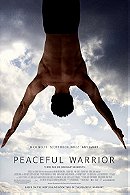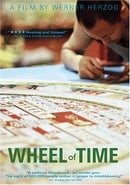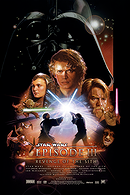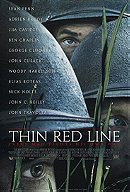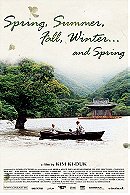The Most Spiritually Affecting Buddhist Movies
The monks watch the action excited and enthralled, and there is a funny and memorable scene in which they try frantically try to get reception by struggling with a roof antenna. The Cup is about important subjects like the effects of globalization on ancient traditions, but it is also lighthearted and fun. The juxtaposition of devout religious practice with more seemingly mundane activities like watching sports is endearing, and actually constitutes a valuable lesson about not taking ourselves too seriously even in the midst of serious spiritual endeavors.

It is not especially sophisticated stuff, but is philosophically consistent throughout and can serve as an inspiring introduction to Eastern types of thinking. Nolte, always an underrated actor, does a terrific, understated job with a role that could have descended into parody in lesser hands. Three great scenes to watch for: Socrates takes a cue from Jesus when faced with a couple of hoodlums, and surprises the hell out of his apprentice; Socrates throws a screaming Dan into a river, and then tells him his name for the experience is "Yaaaaaaaaaaah!"; and Dan sits on the hood of his car for hours literally waiting for some insight, any insight, to arrive.

The level of commitment and perseverance will strike Western viewers; one remarkable sequence portrays a man who has traveled three years, ritually prostrating himself across thousands of miles, to be at Bodh Gaya. When the Dalai Lama ultimately cannot appear because of illness, the moment is heartbreaking, but the crowd's patient reaction makes them all the more impressive.

We find out that the story of how Annakin Skywalker becomes Darth Vader turns out to be a Buddhist lesson in space-opera garb: unable to accept the inevitability of his wife's death, Annakin adopts the evil ways of the dark side of the Force in hopes of using his Sith powers to prevent it. He thus embodies the dangers of attachment (an essential Buddhist concept), and the folly of trying to avoid the natural course of suffering. Annakin wants to find a route around the Buddha's First Noble Truth - "life is suffering," and a tragic perversion of his personality results. Ironically, his inability to accept the inherent loss and change of life leads Annakin to a worse form of suffering - that is, delusion. As Yoda says, "Fear is the path to the dark side. Fear leads to anger. Anger leads to hate. Hate leads to suffering.
But Witt feels the mystical impingement of a bolder duty than even the military affords, and signals his superior toward it. The crucial exchange between the two comes when Walsh tells him, "In this world, a man, himself, is nothing. And there ain't no world...but this one." Witt replies, "You're wrong. I've seen another world." He then comes to show, in Buddhist fashion, that the "other world" may not be another place but simply a different state of mind.
Towards the end of the story, he follows through on his spiritual vision with selfless action, when he saves his fellow soldiers' lives by letting himself be taken by the enemy. Throughout, Witt has an almost unnerving air of calm detachment and compassion that is one of the hallmarks of the Zen adept. He moves through the battle scenes as if one foot is already in the 'other world." Eventually, his altruistic death comes to move and change (in the deepest sense of the word) the mind of Welsh.
The character of Witt could definitely be considered a Christ-like figure, but he is also similar to a Bodhisattva, the Buddhist practitioner (and mythical figure) who delays his or her own enlightenment to help save all beings. Malick mirrors the state of Witt's mind with hypnotizing camera work that lingers and absorbs the scenes of nature, and also the scenes of battle, with an intelligence and purposefulness that will create a spiritual, watchful attitude in the viewer. The director is famous for this kind of thing, and he is only one of a handful of filmmakers (Kubrick, or Fellini in the last lyrical scenes of Amacord, or P.T. Anderson's There Will Be Blood come to mind) that has the uncanny ability to build atmospheres, full of tension, that heighten our senses and that are as palpable as any character.

There is some "kiss, kiss, bang, bang*" here, although it takes place in a larger context of the reaching for transcendent understanding of one's own nature. Ki-duk, who has made films of harrowing violence and stark sexuality (such as in The Isle), in this film aptly takes his dexterity with extreme subjects and effectively applies them to hard-won spiritual lessons. The results are spectacular.
When the apprentice returns to the monastery a struggle for redemption and insight begins, portrayed in all its existential difficulty with harrowing and ingenious images. In the climactic scenes, the apprentice enacts a ritual exemplifying the wisdom he has gained, pulling a heavy stone seemingly for miles up a mountain in a grueling ordeal. Reaching the apex, he drops the literal and metaphoric weight and then meditates gloriously atop the mountain. The sequence is one of the most amazing and profound cinematic symbols of Buddhist spiritual practice.

"A wise man, recognizing that the world is but an illusion, does not act as if it is real, so he escapes suffering. " - The Buddha
"The highest problem of any art is to cause by appearance the illusion of a higher reality." - Goethe
"The secret to film is that it's an illusion. " - George Lucas
The dramatic portrayal of Buddhist lifestyles and spiritual truths is perhaps more difficult to accomplish in an exciting way than depictions of Western religious practices and stories, because the Dharma is geared to inner transformation. And while enlightenment may be one of the most profound experiences a human being can undergo, it doesn't exactly translate easily into compelling cinema.
Christianity, on the other hand, with its bloody and wrenching crucifixion story, its miracles, and a traditionally greater emphasis on social action, lends itself more directly to the external world and the sensationalism upon which cinema thrives - witness the extensive pantheon of superb films about Christ and his message from Passolini's The Gospel According to Saint Matthew to The Mission. The stuff of cinema is often about what is excessive in human nature: big emotions, big explosions, blood, passion, and lots of fighting and screwing (it could be argued that Christology is in some ways about excess, too.)
Yet much of Buddhist practice is about the refrain from excess - it is, after all, called "the Middle Path" - that is, it consists of stepping back from the entanglements of emotional attachment and aggressive desire, and understanding how to free oneself from these things by being more mindful and aware of them. Its teachings attempt to make us more human by questioning our usual human reactions.
Does this mean there cannot be a viable and entertaining Buddhist cinema?
Fortunately, the answer is "no," because the struggle of disciplining the mind away from excess can make for a fascinating struggle in itself. There are many examples in which filmmakers have made the purposes and consequences of relatively "passive" activities like meditation and non-violence into powerful narratives, featuring a more internalized struggle -- let's call them "inner explosions."
And as Buddhism becomes more pronounced and practiced in America, and even evolves into new movements such as "engaged Buddhism," which expands more directly into the social action typical of Christianity, filmmakers from the West have more opportunities to explore the Dharma from fresh perspectives.
The following is a list of films, from both the East and the West, that comment in some way upon the teachings of the Buddha, and that are both explicitly about Buddhist subjects, or more subtly so. (Alas, the first two listed are not yet on DVD, but hope springs eternal that at least one of them shall be soon.)
Added to
list by Nusch
 1 comment
1 comment Login
Login
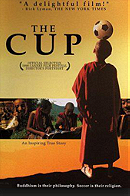
 23
23
 6.6
6.6
 6.9
6.9
